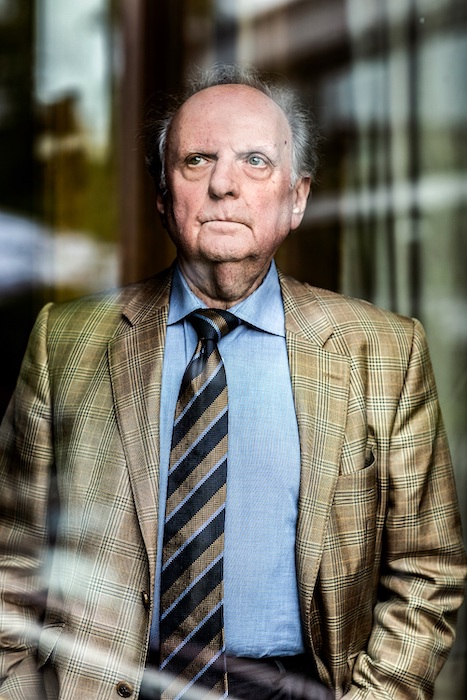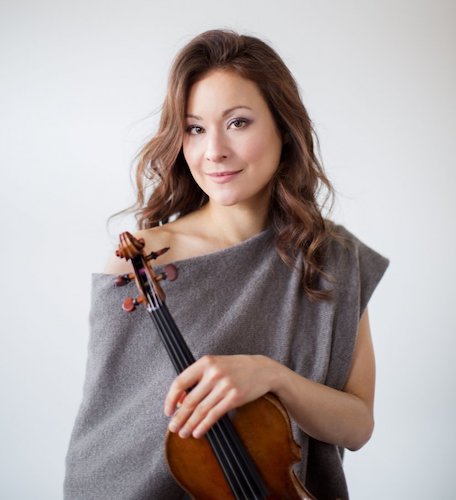Janowski, NSO deliver a memorable night of Bruckner at Kennedy Center

Excellent Bruckner has been elusive for the National Symphony Orchestra in recent years. Former music director Christoph Eschenbach conducted several of the symphonies during his tenure, with results ranging from quite good to scattered.
The drought was finally ended on Thursday night with the return of guest conductor Marek Janowski to the Kennedy Center Concert Hall, leading an exquisite rendition of the Seventh Symphony.
Janowski, the former artistic director of the Rundfunk-Sinfonieorchester Berlin and the Orchestre de la Suisse Romande, led the NSO just last year. At the age of 80, he shows no signs of slowing down, having just started a new post as Chief Conductor of the Dresden Philharmonic this season.
Before the massive ceiling fresco of Bruckner, though, came a delightful miniature, Mozart’s Violin Concerto No. 4. Janowski rarefied the NSO strings to just under thirty players, guiding them in the creation of an ideally balanced cushion for the soloist, Arabella Steinbacher. After the German violinist’s somewhat subdued Brahms Violin Concerto in 2017, this concerto better suited her bright, slender tone. Janowski, a skilled accompanist, kept the orchestra in pace with Steinbacher’s sometimes impetuous playing, which made this familiar piece quite fresh.

The second movement felt pensive but never drooped under its own solemnity. Steinbacher’s sweet E string playing, given vitality by a whisper of vibrato, was matched by the rich sound of the lower strings of her 1716 “Booth” Stradivarius. To boost the virtuosic qualities of the concerto, Steinbacher played Joseph Joachim’s daring cadenzas, with impeccable intonation in the polyphonic layerings of double-stops.
After a sublime, delicate last statement of the slow movement’s theme, Steinbacher dove into the playful third movement. She and the NSO musicians delighted in the finale’s occasional folksy turns, especially the accompaniment of the tune with rustic drones. Janowski and the NSO played the ending of the movement, which disappears in a surprise conclusion, with a subtle flutter of angel wings. Sadly, the lack of a big finish meant the audience did not applaud long and loud enough to earn an encore from Steinbacher.
Janowski prefers the Nowak edition of the Seventh Symphony, which restores most of the cuts made in other editions. Like his fine recording of the work with the Orchestre de la Suisse Romande, the interpretation had both grand space and insistent energy, stretching the piece a little over an hour in duration. The violas and cellos ached with yearning in the upward-reaching first theme, with careful but natural phrasing and striking power in the brass-fueled crescendi.
One of Bruckner’s many tributes to Wagner, the extended pedal point on E near the end of the first movement, a mini-Rheingold introduction, had a delicious, towering strength. Expecting the death of his idol as he worked on the piece, Bruckner included parts for four Wagner tubas, the first use of the instrument in a symphony. The violins throbbed with plangent force in the threnody-like tune of the second movement, the pastoral softness of glowing string sections answered by murky brass textures.
Janowski kept the added parts for cymbal crash and triangle ring at the big climax of the slow movement, one of many expertly marshaled sonic triumphs. Although he took the Scherzo quite fast, the emphasis was on long phrase units, so the piece did not break apart into little fragments. Principal trumpeter William Gerlach hit all his crucial solos on top of the texture with admirable precision, answered by blaring horn and trombone. The Trio section, lush with legato strings, provided an expressive contrast.
The finale rippled with lively interest, the unison sections with brass even turning a little sinister. With all sections of the NSO seeming to lock into Janowski’s conception of the work, there were more shiver-inducing Brucknerian crescendos, as the texture blossomed through the full orchestra.
This was a truly memorable Bruckner Seventh, worthy to stand with such past high-water marks as Riccardo Chailly and the Leipzig Gewandhaus Orchestra in 2014 and Günther Herbig’s Bruckner with the Baltimore Symphony Orchestra.
The program will be repeated 11:30 a.m. Friday and 8 p.m. Saturday. kennedy-center.org; 202-467-4600.
